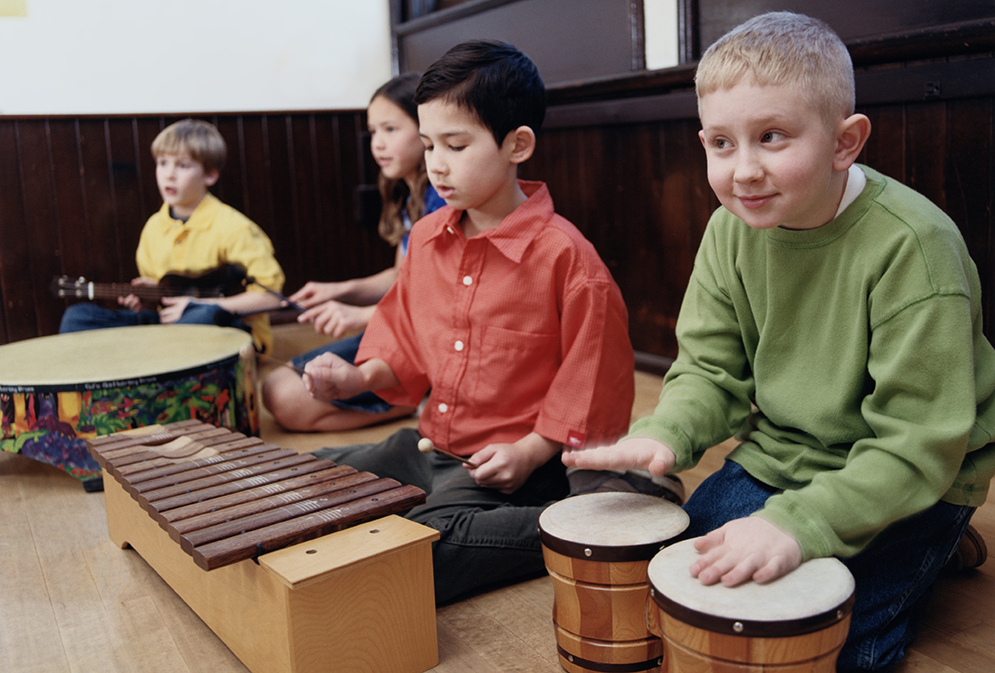 Music teachers must be flexible and adapt to each student’s unique learning style to help them achieve musical excellence. To enhance their comprehension of beat, rhythm, and melody, students may require additional opportunities to explore various instruments. Creative movement, singing, listening activities, and visual aids are all useful techniques for teaching elementary general music. This approach ensures each student can efficiently learn and master each task in the learning process.
Music teachers must be flexible and adapt to each student’s unique learning style to help them achieve musical excellence. To enhance their comprehension of beat, rhythm, and melody, students may require additional opportunities to explore various instruments. Creative movement, singing, listening activities, and visual aids are all useful techniques for teaching elementary general music. This approach ensures each student can efficiently learn and master each task in the learning process.
The Enlightenment
I must tell you; I found the perfect way to teach music to my students—the Kodály method. It’s all about making music literacy and understanding more accessible and creating an environment where singing is the main instrument, and personal musicianship is developed thoroughly. But I wanted to switch things up and add some spice to my teaching methods. During the COVID-19 shutdown, I attended virtual Orff Schulwerk pedagogy workshops across the United States, and they were game-changers! They were super cheap and enabled me to attend local, regional, and national music education conferences. Presenters emphasized that learning experiences should happen through the four-stage learning process of Orff Schulwerk’s pedagogy—imitation, exploration, literacy, and improvisation (Frazee & Kreuter, 1987). Focus was also placed on the value of speech, movement, singing, instruments, and listening lessons. Due to a deepened insight, I adjusted my curriculum by combining the Schulwerk approach with my Kodály framework—ultimately birthing the “KodOrff” approach if you will. As mentioned by Shehan-Campbell and Scott-Kassner (2010), there’s no one right way to teach music. Each teacher must choose the way that works best for them and their students.
Before coming to this realization, my instructional delivery seemed stagnant. The search for more innovative student-centered strategies and activities seemed farfetched.
Revising the Curriculum
Having good ideas is one thing but making them happen is another. Adjusting my curriculum forced me to think about the best way kids learn. Content must be appropriate for their current age, stage, and phase of both their psychological and physical development. So, I started with the basics, such as keeping a steady beat, identifying rhythm, exploratory singing, matching pitch, creative movement, choreographed movement, improvisation, playing instruments, expression, and sight-reading melodic/rhythmic patterns. The intentional spiral design scaffolded musical elements in a developmental, not chronological, model. I believe this remixed pedagogical plan of action provides a well-rounded musical experience.
Curriculum in Action
In the 2021-2022 school year, my first graders played games and sang songs in review of what they learned in kindergarten. One was called “See Saw,” where they partnered with a classmate and sang while mimicking a teeter-totter motion—unconsciously modeling the melodic contour. This made learning fun, and it aided them in hearing tonalities. Students matched pitch using the sol-mi interval on a neutral syllable, decoding the melody of familiar tunes by saying either “high” or “low,” and reading “sol-mi” patterns from a one-line staff. Sometimes, students took turns pointing to “sol-mi” pitch buttons on the whiteboard while the rest sang using the words “high” and “low”, helping me check for understanding. My way of infusing the Orff process was through the lens of imitation, exploration, improvisation, and creating. Activities included echoing teacher-led melodic/rhythmic patterns extracted from folksongs used within the lesson. Folk dances extended targeted concepts with fun being the highlighted component. Providing frequent opportunities for students to use learned content to reconstruct into varied arrangements and original student work reflected student-centered instruction. This process involved both singing and the playing of instruments (i.e. glockenspiels, xylophones, drums, and recorders) which heightened anticipation and interest. Teaching movement from an Orff Schulwerk approach added sequence to both choreographed and creative movement. Infusing student awareness of personal space, whole and partial body parts, shapes, leveled shapes, loco-motor and non-locomotor movement, mass formations, and music mapping improved how my students perceived the artfulness in which music is performed and felt.
Conclusion
The merging of the Kodály and Orff Schulwerk philosophies, in my case, has been proven to be a perfect blend of musical understanding and applying knowledge to create something new. With this pedagogical application, it is with high hopes that each experience fosters a life-long love and appreciation for music that will be joyously shared with the next generation.
You can contact Spencer at spencer.thornton@portsk12.com.




























